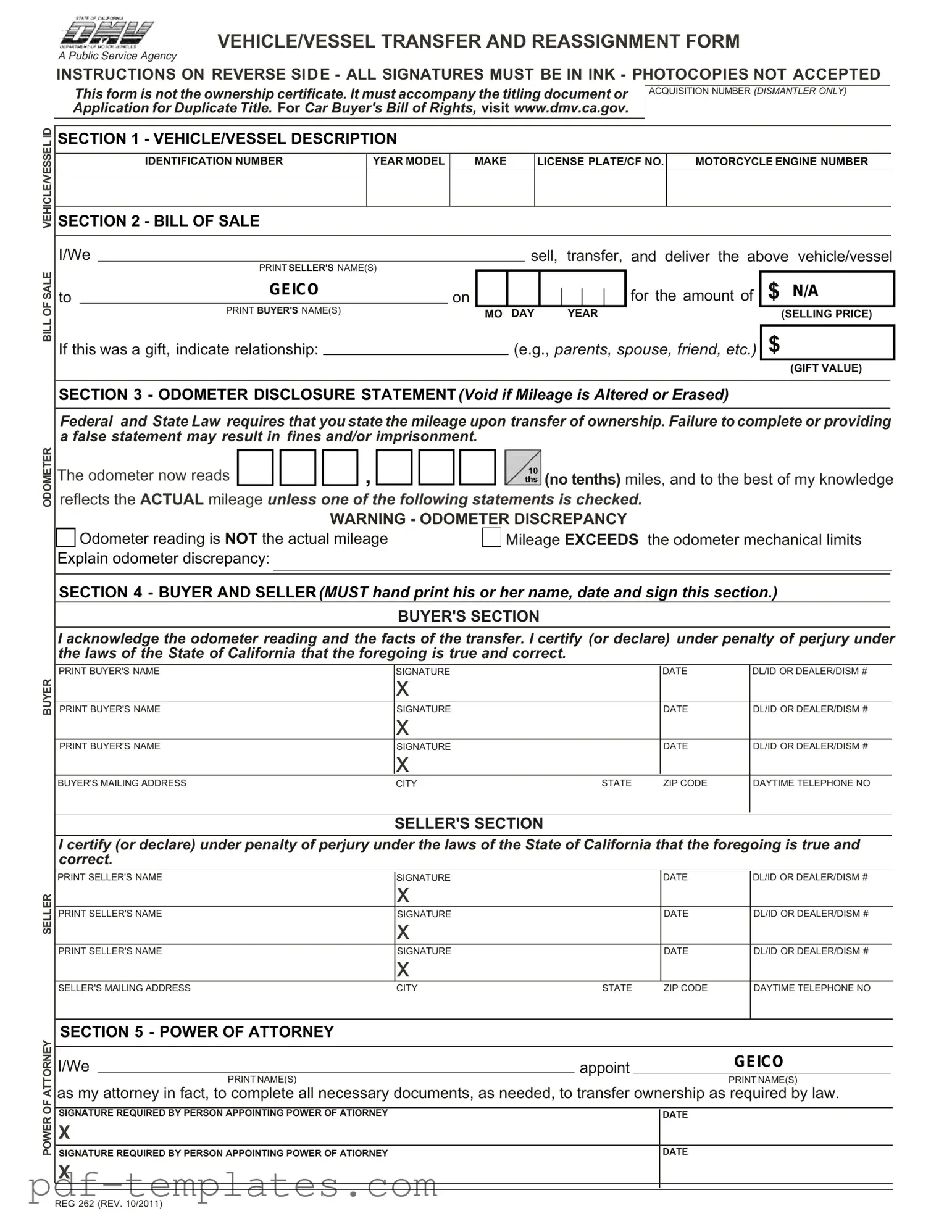The California Form REG 262 is similar to the Bill of Sale, which serves as a legal document that records the transfer of ownership of a vehicle from the seller to the buyer. This document typically includes details such as the names of both parties, a description of the vehicle, the sale price, and the date of the transaction. Like the REG 262, the Bill of Sale provides proof of the agreement between the buyer and seller, and it may be required for registration purposes. Both documents aim to ensure that the transfer of ownership is clear and legally binding.
Another document comparable to the REG 262 is the Odometer Disclosure Statement. This statement is required by federal and state law when a vehicle is sold. It mandates that the seller disclose the vehicle's mileage at the time of sale. Similar to the odometer section in the REG 262, this document aims to prevent fraud related to the vehicle's mileage. Both documents emphasize the importance of accurate reporting and the legal ramifications of providing false information.
The Application for Duplicate Title is also similar to the REG 262 in that it is used in the context of vehicle ownership transfer. When a title is lost or damaged, the Application for Duplicate Title allows the owner to obtain a new title. This application must be accompanied by appropriate documentation, similar to how the REG 262 must accompany a title or application for duplicate title. Both documents facilitate the legal recognition of ownership in the event of a title issue.
The Power of Attorney form is another document that shares similarities with the REG 262. This form allows one person to authorize another to act on their behalf in legal matters, including the transfer of vehicle ownership. In the REG 262, a section is dedicated to appointing an attorney-in-fact to complete necessary documents. Both forms require signatures and serve to ensure that the appointed individual has the authority to act in the transaction.
The Vehicle Registration Application is also relevant in this context. This document is used to register a vehicle with the state after it has been purchased. Similar to the REG 262, the Vehicle Registration Application requires information about the vehicle and the owner. Both documents are essential in establishing legal ownership and ensuring compliance with state regulations regarding vehicle registration.
Lastly, the Release of Liability form is akin to the REG 262 as it serves to protect the seller from future liability associated with the vehicle after the sale. When a vehicle is sold, the seller can submit this form to the Department of Motor Vehicles (DMV) to indicate that they are no longer responsible for the vehicle. Both documents are crucial in formalizing the transfer of ownership and mitigating potential legal issues that may arise after the sale.
